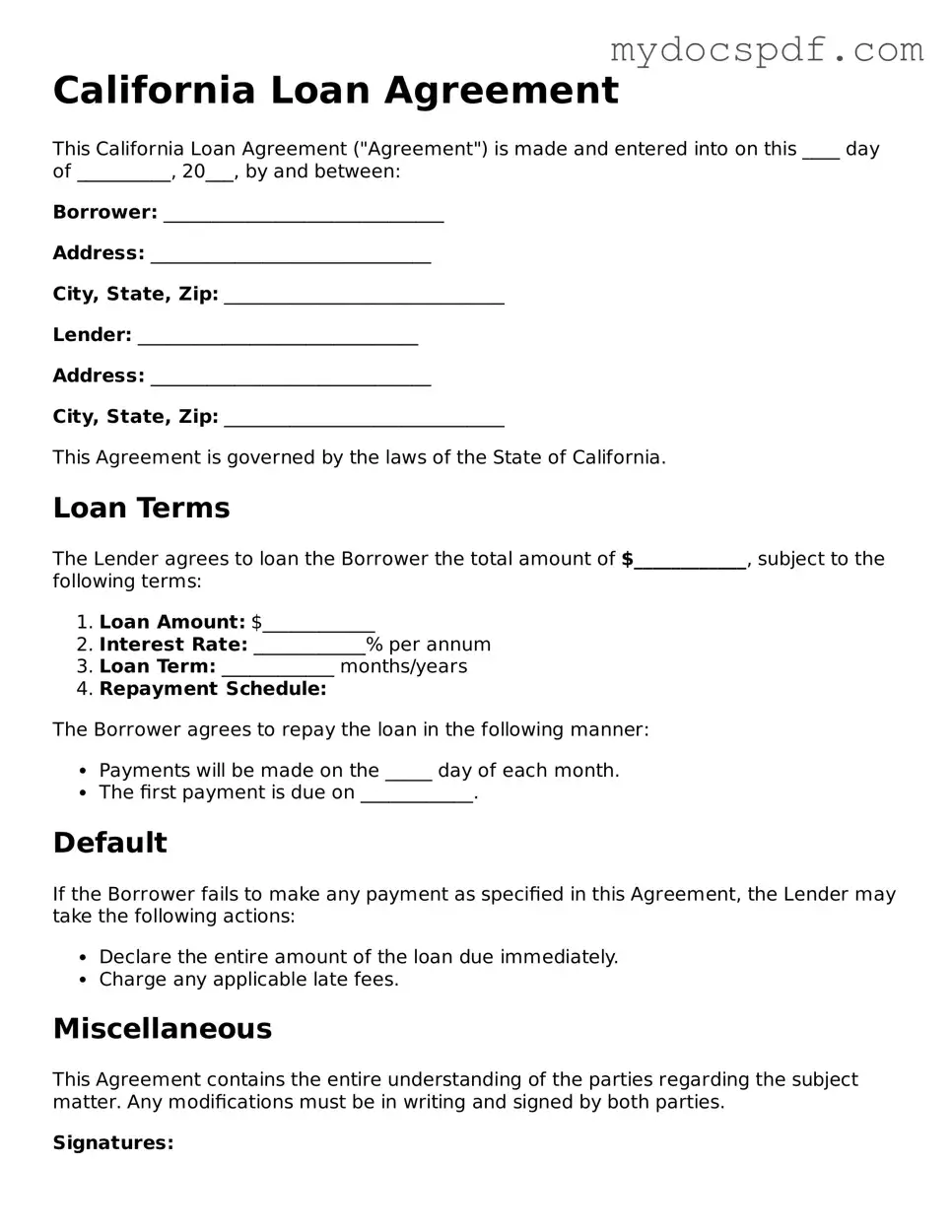California Loan Agreement
This California Loan Agreement ("Agreement") is made and entered into on this ____ day of __________, 20___, by and between:
Borrower: ______________________________
Address: ______________________________
City, State, Zip: ______________________________
Lender: ______________________________
Address: ______________________________
City, State, Zip: ______________________________
This Agreement is governed by the laws of the State of California.
Loan Terms
The Lender agrees to loan the Borrower the total amount of $____________, subject to the following terms:
- Loan Amount: $____________
- Interest Rate: ____________% per annum
- Loan Term: ____________ months/years
- Repayment Schedule:
The Borrower agrees to repay the loan in the following manner:
- Payments will be made on the _____ day of each month.
- The first payment is due on ____________.
Default
If the Borrower fails to make any payment as specified in this Agreement, the Lender may take the following actions:
- Declare the entire amount of the loan due immediately.
- Charge any applicable late fees.
Miscellaneous
This Agreement contains the entire understanding of the parties regarding the subject matter. Any modifications must be in writing and signed by both parties.
Signatures:
Borrower: ______________________ Date: ____________
Lender: ______________________ Date: ____________
